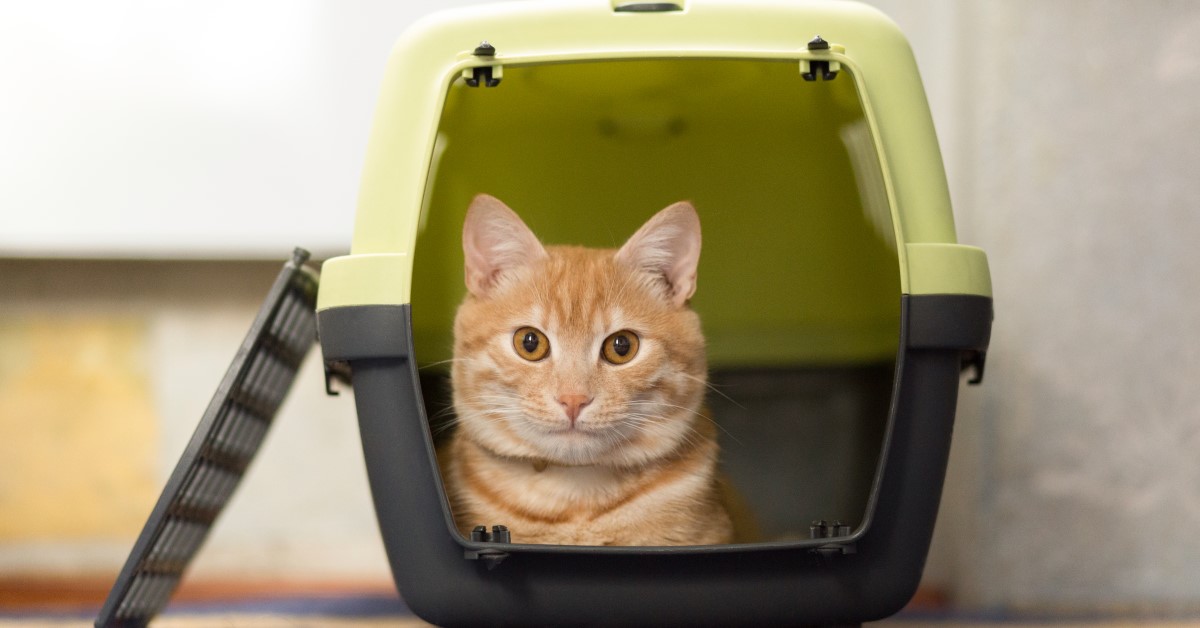Tips on Choosing the Best Cat Carrier
Your kitty can travel in comfort and style once you know what kind of carrier to purchase.

Sooner or later, you'll need to carry your cat in something more than just your two arms. A well-made, reliable cat carrier offers the perfect solution, whether you plan on taking long vacation trips with your kitty or you just want a reliable option for those all-important trips to the vet. However, all cat carriers are not created equal. Let's look at a few things to consider before selecting the best cat carrier for you and your feline companion.
Features Every Cat Carrier Should Have
Whatever cat carrier brand or style you select, your pet carrier should provide a few basic yet critical features. First and foremost, it should provide safety and security when in transit. Look for a cat carrier that will fit snugly into the floor of your car's backseat area so it won't slide around in an upsetting or dangerous manner. If your car's rear seats meet crash-test standards, you may safely strap the carrier into a seat using the seatbelts instead of placing it on the floor.
Accessibility counts as another key feature. Ideally, the carrier's top can come off, allowing you (or your vet) to gain access to the inside of the carrier without necessarily removing your cat. Large doors or flaps at both the front and the rear offer additional accessibility by allowing for easier entrances and exits. Greater accessibility will also make your cat carrier easier to clean.
Although function obviously matters more than appearance, it never hurts to insist on a cat carrier that actually looks nice in your home. After all, you'll probably want to keep it close at hand for whenever your cat needs it, which means leaving it out in public view.
Types of Cat Carriers Worth Considering
Now that you know some of the key features to look for in a cat carrier, it's time to examine the main types of carriers you're likely to encounter in your search. These types are differentiated mainly by the material that makes up their walls. The two main types you'll find include hard-sided carriers and soft-sided carriers.
Hard-sided cat carriers feature rigid plastic in their walls and top, along with plastic or metal doors. If your cat is an escape artist, the rigid doors can help prevent it from getting out of the carrier. The solid surfaces also offer easy cleaning as well as greater security for nervous kitties. On the other hand, hard-sided cat carriers can prove heavy and bulky while not providing as much built-in comfort as their softer counterparts.
Soft-sided cat carriers feature materials such as nylon instead of plastic or metal. This makes the carrier lightweight and easy to store; it also helps to ensure the greatest possible comfort for the kitty within. However, the softer material can't provide the same collision protection or easy cleaning as harder material. Additionally, it may not hold up well against your cat's teeth and claws over time.
Types of Cat Carriers Not Worth Considering
You may see other types of pet carriers for cats that look attractive and functional but come with certain deal-breaking flaws or limitations. For example, a cardboard cat carrier offers the ultimate in light weight and ease of carrying, but it's also uniquely vulnerable to water and crush damage. Even if external forces don't destroy it in short order, your kitty very well might.
You may also see backpack-style cat carriers for sale. While this option offers a convenient way to transport your cat when there's simply no space for a traditional carrier, many cats get stressed out when confined in such a small, unstable container. Consider it an emergency fallback option at best, not a primary choice.
Introducing Your Cat to the Carrier
Once you've selected the type of cat carrier that best suits both your needs, it's time to make sure your cat will feel cozy and relaxed in it -- a potential challenge if your cat has never used a carrier or is used to a different kind. Start by placing comforting, familiar items such as a favorite toy or blanket in the carrier, then leave the door open so your cat can explore it at their leisure. (The occasional treat or bit of catnip may also help.) Keep the carrier in a part of the home that your cat uses all the time.
Once your cat has ventured into the carrier, practice closing the door and lifting the carrier gently, holding the bottom to keep it as steady as possible. From there, try taking your cat on short car trips until it gets comfortable with the idea of being transported in the carrier.
When in Doubt, Talk to Your Vet
This getting-acquainted process can take some time and require patience on your part. But if your cat can't seem to shake its fear of the carrier, ask your veterinarian to recommend a different type that might suit your kitty better. If your cat suffers from motion sickness or just hates carriers in general, your veterinarian may recommend the use of specific medications or comforting pheromone spray products. With the right equipment, patience, and expert advice, you can make your cat's carrier experience a safe and pleasant one.
Ready to start saving money on pet wellness care?
Then take a look at Mint Wellness, the pet wellness plan that provides fast reimbursement on routine pet care. Save on vaccinations, wellness exams, preventatives, dental, and more!
Learn More


